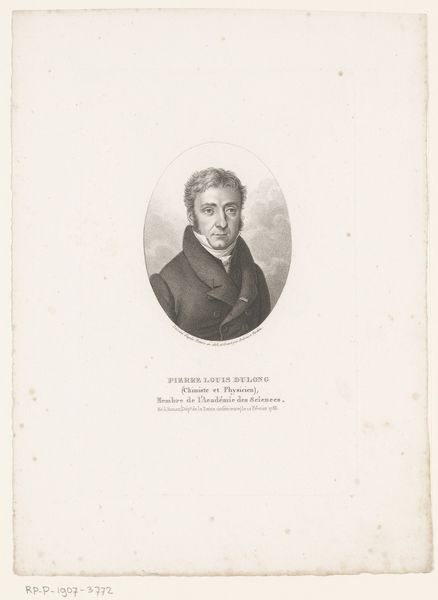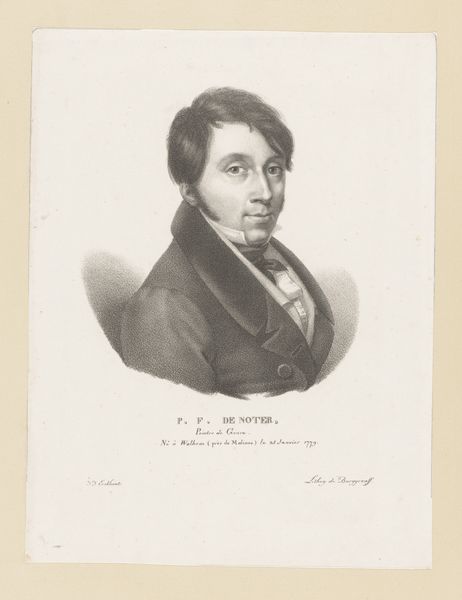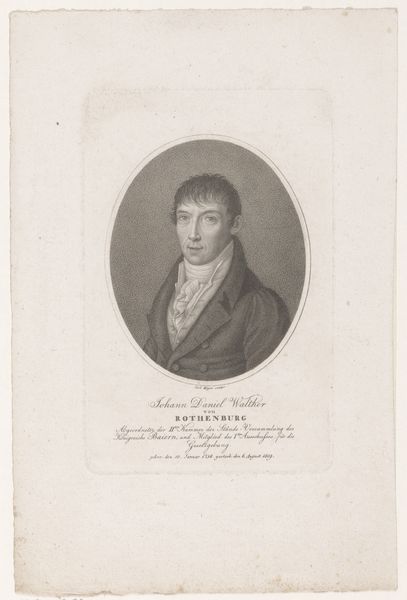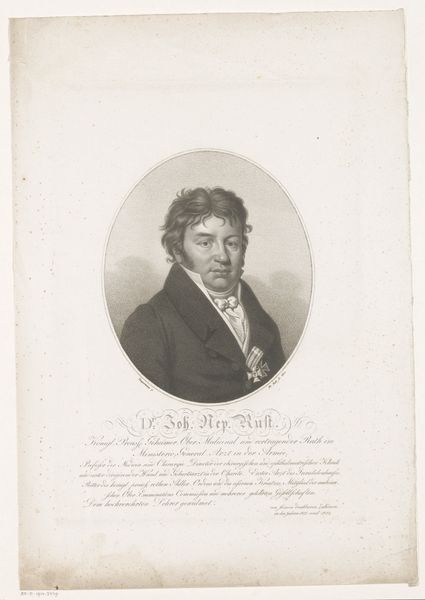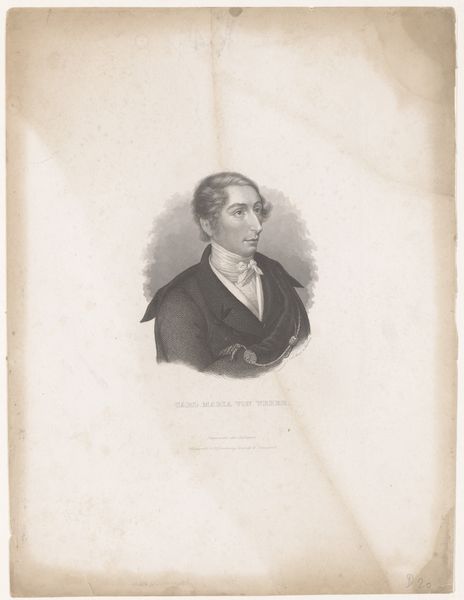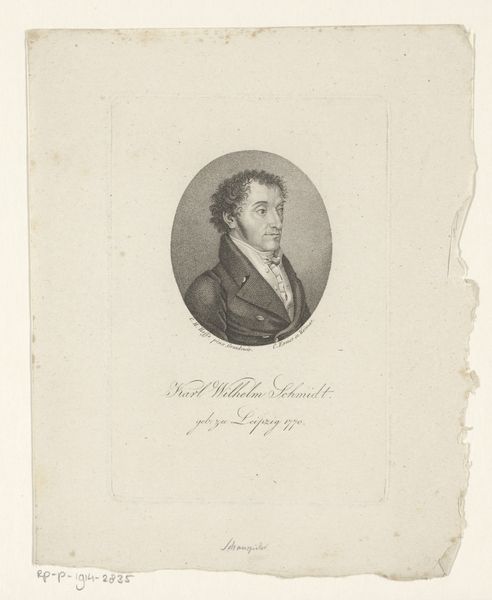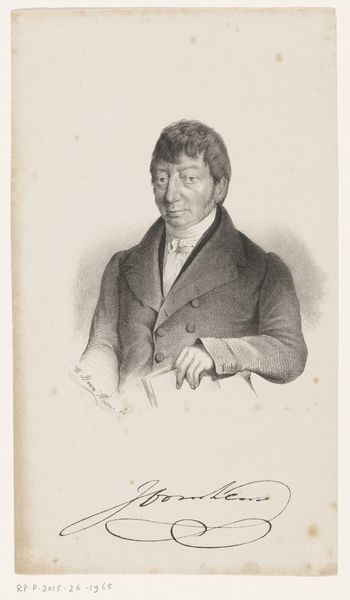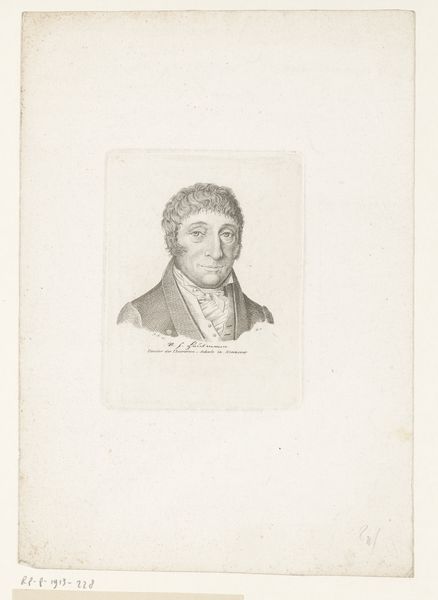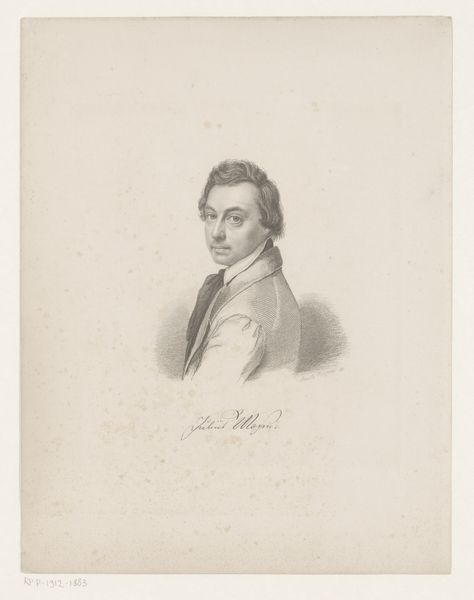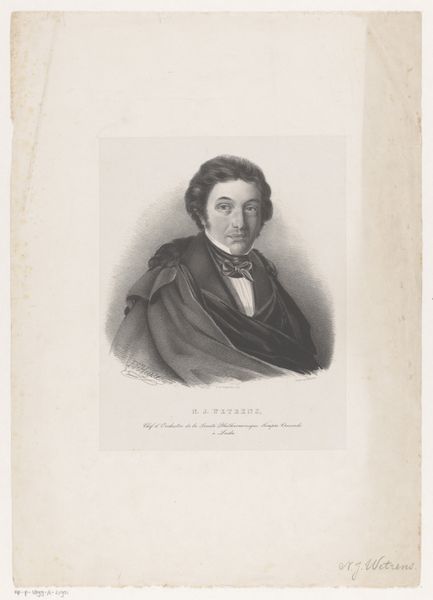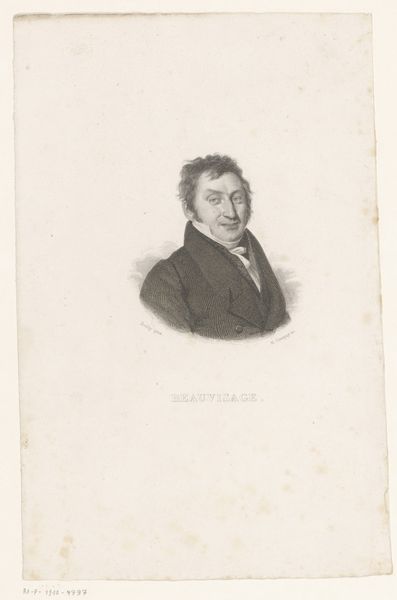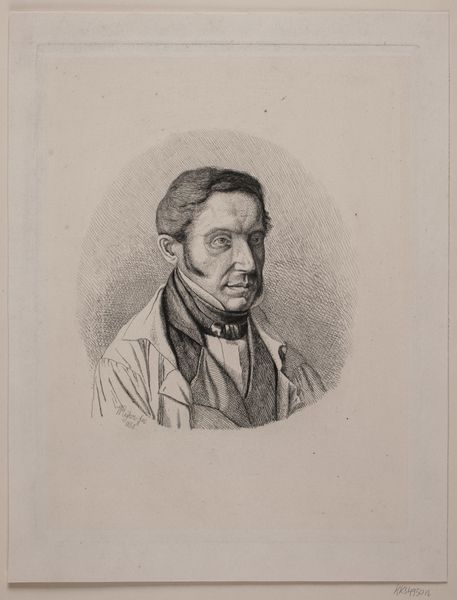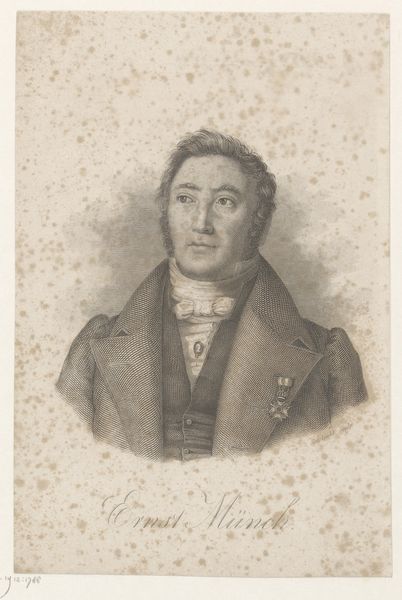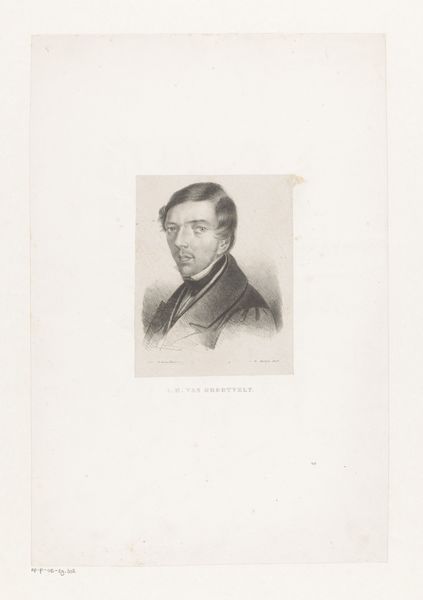
print, engraving
#
portrait
#
neoclacissism
# print
#
engraving
#
realism
Dimensions: height 177 mm, width 120 mm
Copyright: Rijks Museum: Open Domain
Curator: Here we have Johann Friedrich Bolt's 1823 engraving, "Portret van Heinrich Friedrich Link," currently held at the Rijksmuseum. Editor: He appears rather stern, almost severe, don't you think? The sharp contrast between the light paper and dark lines certainly emphasizes his commanding presence. Curator: The composition employs the Neoclassical style popular at the time. Notice the oval framing, lending it a sense of classical refinement and a restrained aesthetic characteristic of portraiture in that era. Editor: Indeed. But look at Link’s gaze; it avoids direct eye contact, projecting not strength, but distance. And what social position did Link occupy that made such a formal portrait necessary? Curator: Heinrich Friedrich Link was a prominent botanist and naturalist of his time. This print served as a dissemination of his image, part of building intellectual celebrity through reproducible media. Editor: Which also makes one consider access. Who was the target demographic for these kinds of portrait prints? Obviously not the masses. How did it enforce social hierarchies? The image feels steeped in institutional authority and male intellectualism. Curator: Technically speaking, note the precise linework that captures subtle variations in light and shadow, achieving remarkable detail in his facial features and clothing. The engraving beautifully models his features with delicate hatching. Editor: Of course. I am sure Link wanted to solidify a legacy. Did he commission the work, or Bolt? Either way, this form of controlled reproduction—an engraved print—becomes a tool for curating how Link wanted to be seen in the 19th Century and after. It speaks to issues of class and scientific authority. Curator: These precise formal portraits give us insights into how one portrayed status and profession during the Neoclassical era, using controlled aesthetics and expert engraving skills. Editor: And how these visual strategies worked—and continue to work— to shape and perhaps solidify prevailing cultural narratives.
Comments
No comments
Be the first to comment and join the conversation on the ultimate creative platform.
